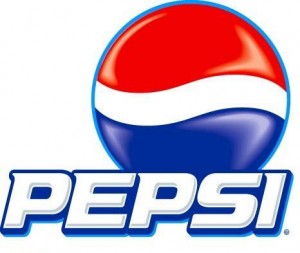invertising
In this week’s Brandweek is an article about the internal marketing Pepsi  undertook prior to launching its latest campaign. The piece reported thatPepsi’s “Rally Day” efforts included things like 20-foot tall billboards in the parking lot greeting employees featuring images from the campaign — and an enormous refresh symbol flag unfurled from the headquarters’ roof. Apparently one of the marketing managers at Pepsi coined the term “Invertising” to refer to the targeting of employees with a branding campaign before it goes public.
undertook prior to launching its latest campaign. The piece reported thatPepsi’s “Rally Day” efforts included things like 20-foot tall billboards in the parking lot greeting employees featuring images from the campaign — and an enormous refresh symbol flag unfurled from the headquarters’ roof. Apparently one of the marketing managers at Pepsi coined the term “Invertising” to refer to the targeting of employees with a branding campaign before it goes public.
The article also recounted similar approaches by Coke, Kellogg, and others. Comments from observers in the industry included, “Companies that are high performing and do well in terms of long-term profitability are more inclined to have programs that make sure employees are aware of the brand promise.”
Speaking to your employee base in a brand campaign is smart and important — but it’s only a piece of what’s required. If companies only treat their employees as a target audience for a marketing campaign, the brand effort will still fall flat.
Instead of just exposing employees to the brand platform and getting them excited about it, companies need to ensure the brand is fully operationalized by all employees. What’s needed is full brand engagement, alignment, and integration. Here’s what I mean:
Brand Engagement — As with externally-targeted marketing, internal one-way communication is limited in its effectiveness. It’s one thing to hear or see a message — it’s another to internalize, personalize, and process it. Employees need to be engaged on three levels:
 heads — employees must be knowledgeable about what the brand stands for and how it is positioned, what the elements and objectives of the new campaign are, the rationale behind the strategy, etc.
heads — employees must be knowledgeable about what the brand stands for and how it is positioned, what the elements and objectives of the new campaign are, the rationale behind the strategy, etc.- hearts — they must be inspired by the brand and motivated to change what they do and how they do it in order to operationalize the brand — while excitement and hype are important, today’s naturally-skeptical employees may need more than just a “feel good” effort to be motivated
- hands and feet — they should be equipped with and empowered by tools to use to interpret and reinforce the brand appropriately
Only when employees are full engaged with the brand will they align their behaviors and decision-making with it.
Brand Alignment — Most internal efforts are geared toward employees at lower levels on the org chart and/or sales/servicepeople on the “frontlines” with customers. It’s equally if not more important to ensure those in leadership positions share the same understanding of and engagement with the brand.
You can’t assume the executive committee — or middle managers or regional heads — share one common vision and decision-making criteria. Any internally-focused brand effort must facilitate alignment throughout the organization at all levels. Posters and parties may work for some groups of employees — worksessions and personal meetings are probably needed for others.
Other stakeholders must also be engaged and aligned. Brand stakeholders are people or groups that have an investment, share, or interest in your brand — e.g., business partners, agencies, investors/shareholders, etc. These people a critical role in how your brand is experienced and delivered, so they should not be overlooked.
Brand Integration — This last point speaks to the fundamental role of a brand within a company. Companies that leverage their brands to achieve phenomenal growth and market stature take their brands beyond marketing. They use their brand an operational tool to drive what their company delivers to its customers and how it does it.
As such, their internally-targeted brand efforts are focused on integrating the brand into everything everyone does — using the brand to generate shared insights about new growth opportunities, make better planning decisions, and improve execution throughout their organization. While such efforts might be kicked-off with a special day at headquarters or an awareness campaign, they don’t stop there. True brand integration requires constant attention and could truly be considered a daily project.
So, I say kudos to companies like Pepsico which are investing in employee-targeted brand efforts — but I also encourage them to make what they’re doing about more than awareness and information. The objective should be full brand engagement, alignment, and integration.
(One final note about “invertising” — Companies may try to use one campaign to reach internal and external audiences. While this approach sometimes works (think IBM’s e-business effort), most of the time it doesn’t. The same strategy, medium and message that motivate employees do not necessarily motivate customers — and vice versa. Last year, Ad Age published an article of mine that explains how companies should consider different ways to engage different audiences.)